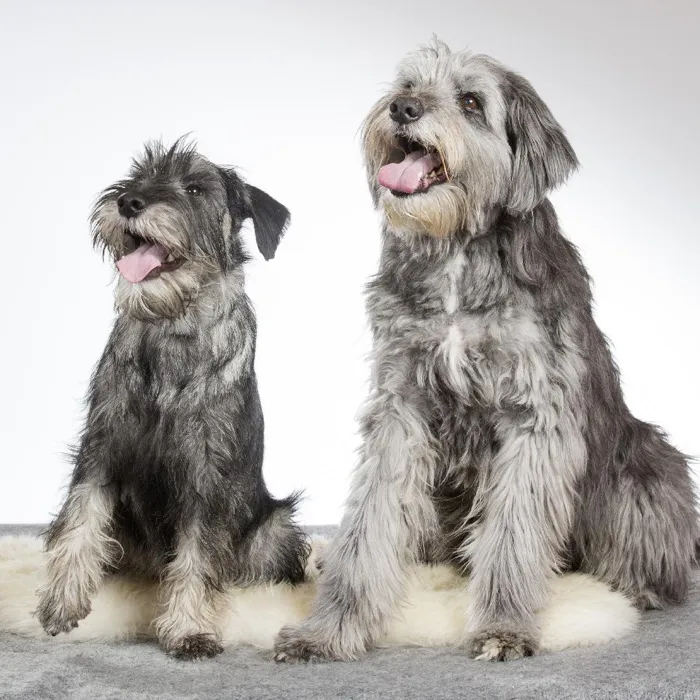Standard Schnauzer

The bold, bewhiskered Standard Schnauzer is a high-spirited farm dog from Germany. They are the sometimes-willful but ever reliable medium-sized members of the Schnauzer family of breeds. The Standard's sporty look is a canine classic.


Ask About Standard Schnauzer ?
Breed Traits
General Appearance
The Standard Schnauzer is a robust, heavy-set dog, sturdily built with good muscle and plenty of bone; square-built in proportion of body length to height. His rugged build and dense harsh coat are accentuated by the hallmark of the breed, the arched eyebrows and the bristly mustache and whiskers. Faults - Any deviation that detracts from the Standard Schnauzer's desired general appearance of a robust, active, square-built, wire-coated dog. Any deviation from the specifications in the Standard is to be considered a fault and should be penalized in proportion to the extent of the deviation.
Size, Proportion, Substance
Head
Neck, Topline, Body
Tail
Forequarters
Hindquarters
Coat
Color
Gait
Temperament
Disqualifications
Group
Working
About
History
Standard
Nutrition
Grooming
Exercise
Training
Health
All pets have found there homes! Sign up to be notified when new pets are added so you don't miss out.


